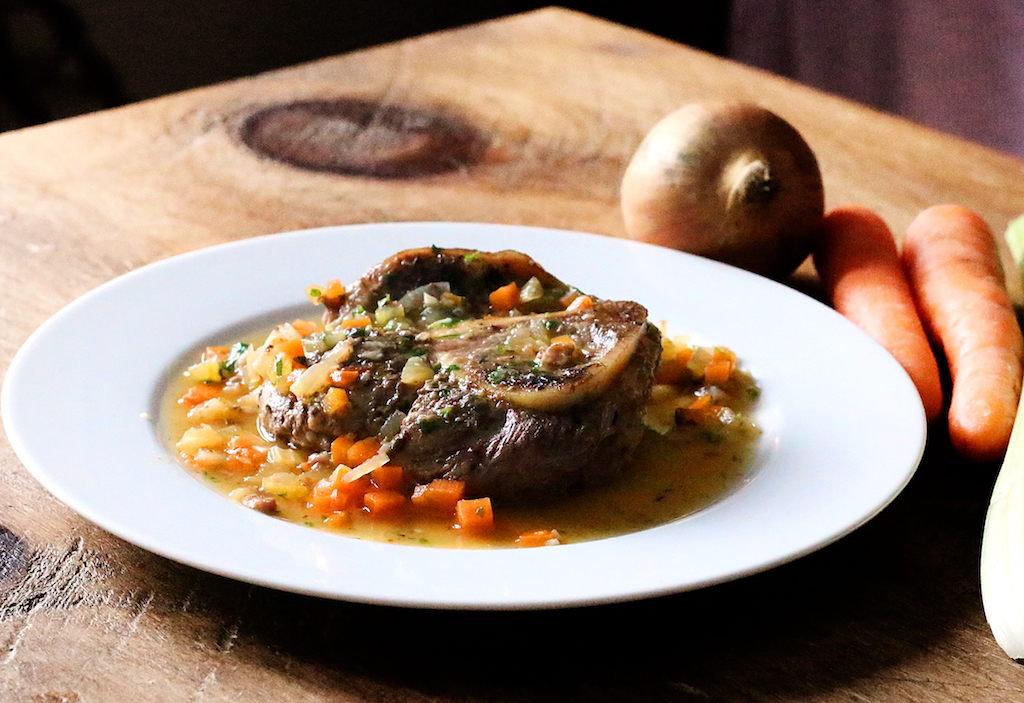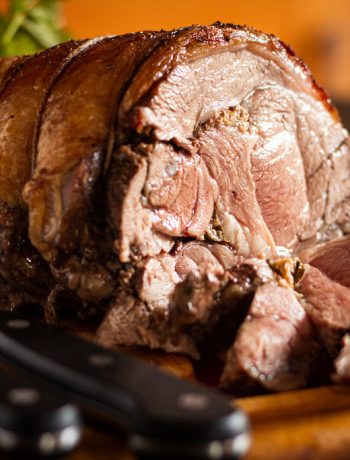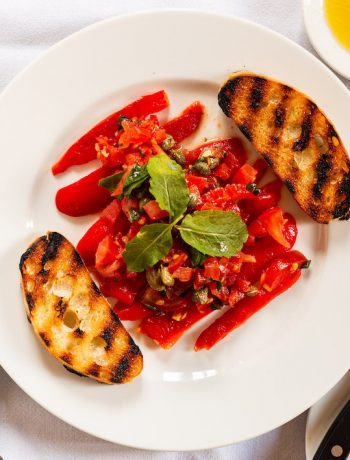The British are too squeamish about veal. Back in the 1980s, if you mentioned veal to a Brit, they would look at you like you had just burned their firstborn alive. It is true that some years ago, male calves, as unwanted byproducts of the dairy industry, were no real use for full-scale beef, were confined in small crates to ensure that their muscles remained blood-free and tender per the peculiar demands of the historical veal trade. This shocking treatment of young cattle led the British to avoid veal, and to scream with pointed fingers of pure fire at the French and the Germans who were eating it with impunity. Come 1990, veal crating was outlawed in the UK, and Europe followed in 2007. California was a little slow, and outlawed the practice in 2015. Today, some 8 or so US states ban veal crating, while the majority continue regardless.
These days, veal calves are raised in a completely different manner (apart from in the 54 US states that can’t get their legislative arses in gear). The cattle are separated from their mothers within hours, and then housed in groups, or allowed to pasture. Antibiotics are rarely used for grass-fed calves. Slaughter is conducted at less than 1 month of age while the animal still weighs less than an athletic teenager. The result is a flavoursome, tender meat in which some of the usually tough beef cuts remain very usable. In addition, if you drink milk or eat cheese, eating veal is actually quite ethical because it does not absorb much in the way of arable land, uses up a calorific byproduct of your favourite Wensleydale, and would be turned into cat food if humans didn’t eat it. That said, there are some practices in veal production that still leave a lot to be desired, so if you are buying it, you really need to look up its provenance.
One of the most famous veal cuts is cross-cut hind shank, i.e. the entire cross section of the rear shin (the hind has a lot more meat on it than the essentially muscle-free forelock). This is the cut that the Italians call ‘ossobuco,’ which translates unromantically to ‘bone with a hole’ because of its roughly circular, marrow-filled piece of bone sitting in the mouth of the Pac Man-shaped meat. In the UK, ossobuco can be a devil to get hold of. At the moment, you will need to use a specialty butcher or hit up Ocado.
There is not an Italian alive who would argue with the idea that ossobuco alla Milanese (i.e. the version from Milan) is the definitive, classic way of cooking a veal shank. Given the northerly concentration of Italian dairy farming, ossobuco is certainly from the alpine end of Italy, and there is general nodding agreement over an espresso that it originated in Lombardy. The problems come when we try to pin down when ossobuco alla Milanese came to be made. The key clues comes from its inclusion in Pellegrino Artusi’s La Scienza in Cucina e l’Arte di Mangiar Bene. This book, published in 1891, was a collection of classic Italian dishes, and this would indicate that ossobuco alla Milanese has been on family tables long before that – quite how long is impossible to know.

Pellegrino Artusi (1820–1911), Businessman, writer and author of ‘La scienza in cucina e l’arte di mangiar bene’ – The Science of Cooking and the Art of Fine Dining
As with many classic Italian dishes, British scholars of the cuisine have to pick through a written pissing contest between the Guardian’s Felicity Cloake, and the Principessa of Italian cooking Anna Del Conte. And it all comes down to carrots. Del Conte doesn’t use them because she likes to keep things very simple indeed. Cloake can’t understand why they would not be there given the presence of the ‘holy trinity’ of carrot, celery and onion in just about everything else. The Italians, through the authority of the Gruppo Virtuali Cuochi Italiani, have rightfully waded into the debate and prepared their own analysis of the required ingredients of ossobuco. They come away just as confused as everyone else.
On balance, I think that that ossobuco alla Milanese has become one of those ‘like mama’ recipes with a bit of this and a bit of that. Certainly, no harm will come to humanity if carrots are added.
Ossobuco alla Milanese
Ingredients
- For the ossobuco:
- 4 ossobuco joints, individually tied like present parcels to prevent the bone from loosening
- 2 tbsp flour
- 3 tbsp olive oil
- 50g unsalted butter
- 1 sticks of celery, finely diced
- 1 small carrot, finely diced
- Half an onion, finely chopped
- 150ml dry white wine
- 300ml stock (use veal stock if you can get it; beef stock is OK)
- Sea salt and freshly ground pepper
- For the gremolada:
- 1 tsp lemon zest, finely grated
- 2 tbsp parsley, very finely chopped
- Half a garlic clove, very finely chopped
Instructions
Coat the parcelled ossobuco joints with salted flour (half a tsp of salt). Heat the oil in a large Dutch oven large enough to spread all the joints on the bottom in one layer. Brown the ossobuco in the pain, remove and set aside.
Add half the butter to the pan and sauté the vegetables until softened but not browned (approx 10 mins). Add the meat back to the pan, add the wine and reduce it by half. Whisk any pan residue back into the sauce.
Pour in the stock, ensuring the meat is just covered. Bring up to a simmer, cover, and cook on low for 2 hours. Every half an hour, gently turn the ossobuco over taking care not to let the bone drop out or come away from the meat. You may need to add small amounts of stock to keep the meat just submerged, but don't over thin the sauce.
Once cooked, carefully remove the ossobuco to a dish and place in a cool oven to keep warm. If the sauce is too thin, briefly boil it to reduce. Once right, whisk the remaining butter into the sauce, and heat without boiling. Check seasoning and adjust.
Make the gremolada by combining all its ingredients in a small bowl until evenly mixed. mix the gremolada into the sauce.
To serve, carefully place the ossobuco on a warmed plate, and spoon over the sauce.
Notes
Ossobuco alla Milanese is often served with risotto alla Milanese, which is a simple, saffron-flavoured risotto normally made with red wine rather than white, or with plainer risotto bianco. The Nosey Chef has made all these versions and we think that the red wine edition is a nice idea, but it looks like death on a plate (nobody likes purple food). Better is Martini Extra Dry. Adding tomatoes to your ossobuco sauce gives you ossobuco Emilia-Romagna, which is usually served without the gremolada, and with boiled rice instead of risotto. Depending on where you get your ossobuco from, you may end up with very uneven sizes of joint. If you have some tiddlers, then cook those alongside the full size ones to add flavour, and then hook out the marrow and whisk it into the sauce, discarding the meat.




 (12 votes, average: 3.33 out of 5)
(12 votes, average: 3.33 out of 5)


No Comments